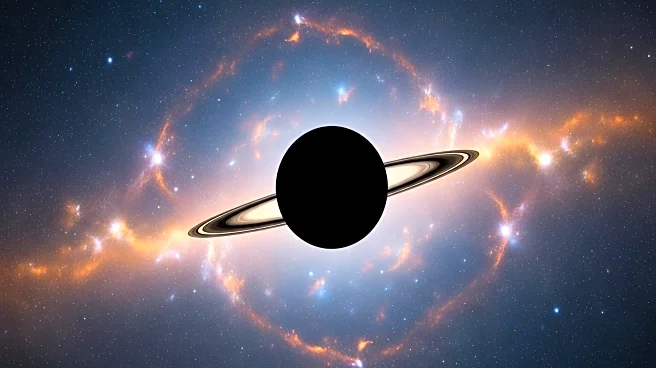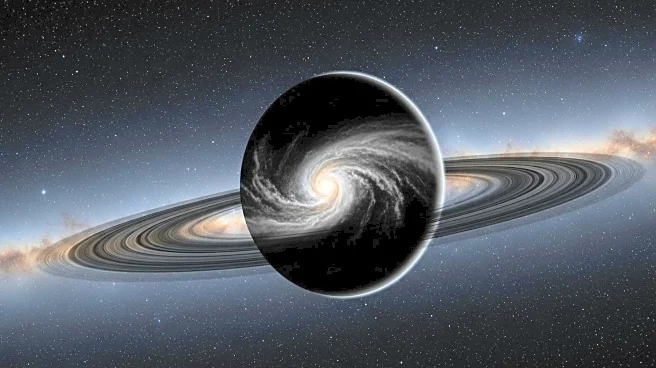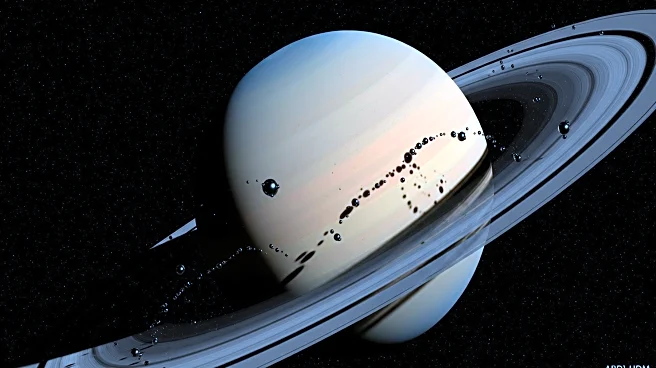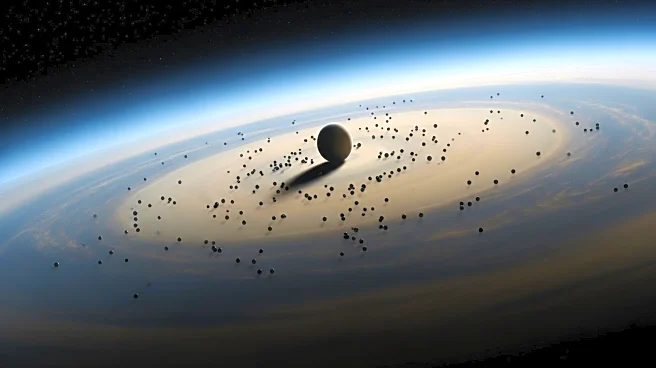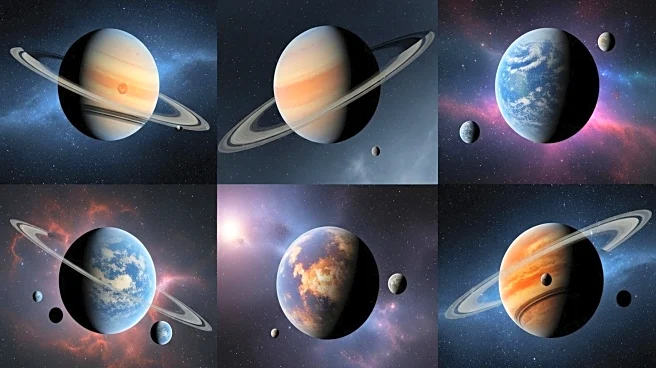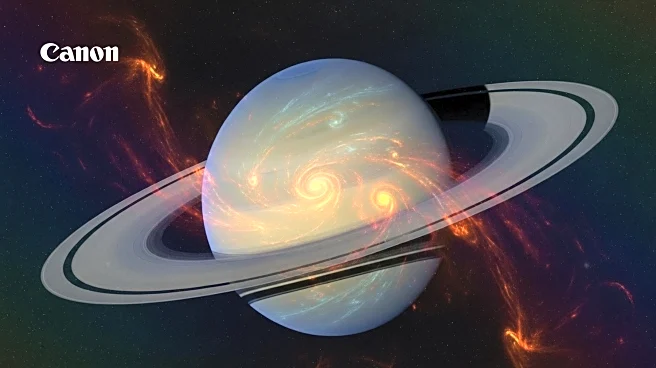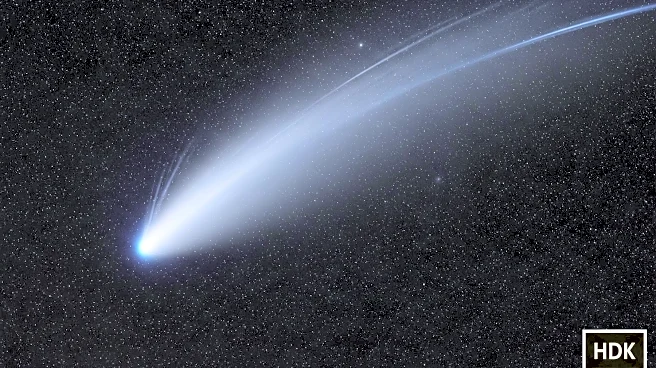What's Happening?
Astronomers have observed unique structures in Saturn's atmosphere using the James Webb Space Telescope. These include 'dark beads' and a 'six-pointed star' shape formed by atmospheric extending arms. The findings, published in Geophysical Research Letters, reveal phenomena that have no known analog in the solar system. The structures are believed to be stable over hour-long timescales and may result from shears between ionospheric winds.
Why It's Important?
The discovery of these unexplained structures in Saturn's atmosphere challenges existing understanding of planetary atmospheres and ionospheric dynamics. It opens new avenues for research into atmospheric phenomena, potentially offering insights into similar processes on Earth and other planets. Understanding these structures could enhance knowledge of atmospheric interactions and contribute to broader planetary science.
Beyond the Headlines
The findings highlight the capabilities of the James Webb Space Telescope in observing distant planetary atmospheres. The unexpected nature of the structures suggests complex interactions within Saturn's ionosphere, which may be linked to the planet's famous hexagonal storm. Further study could provide context for atmospheric phenomena on Earth and other gas giants, enhancing scientific understanding of planetary atmospheres.

